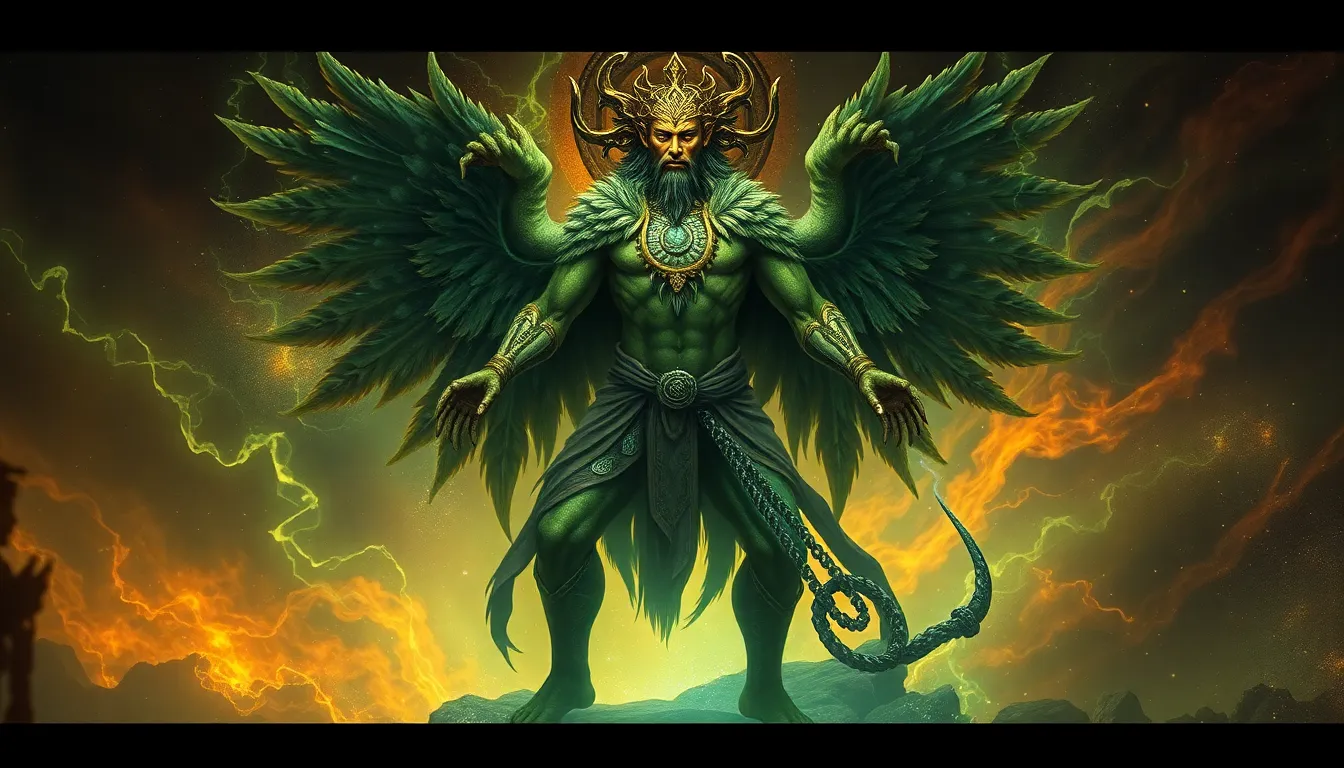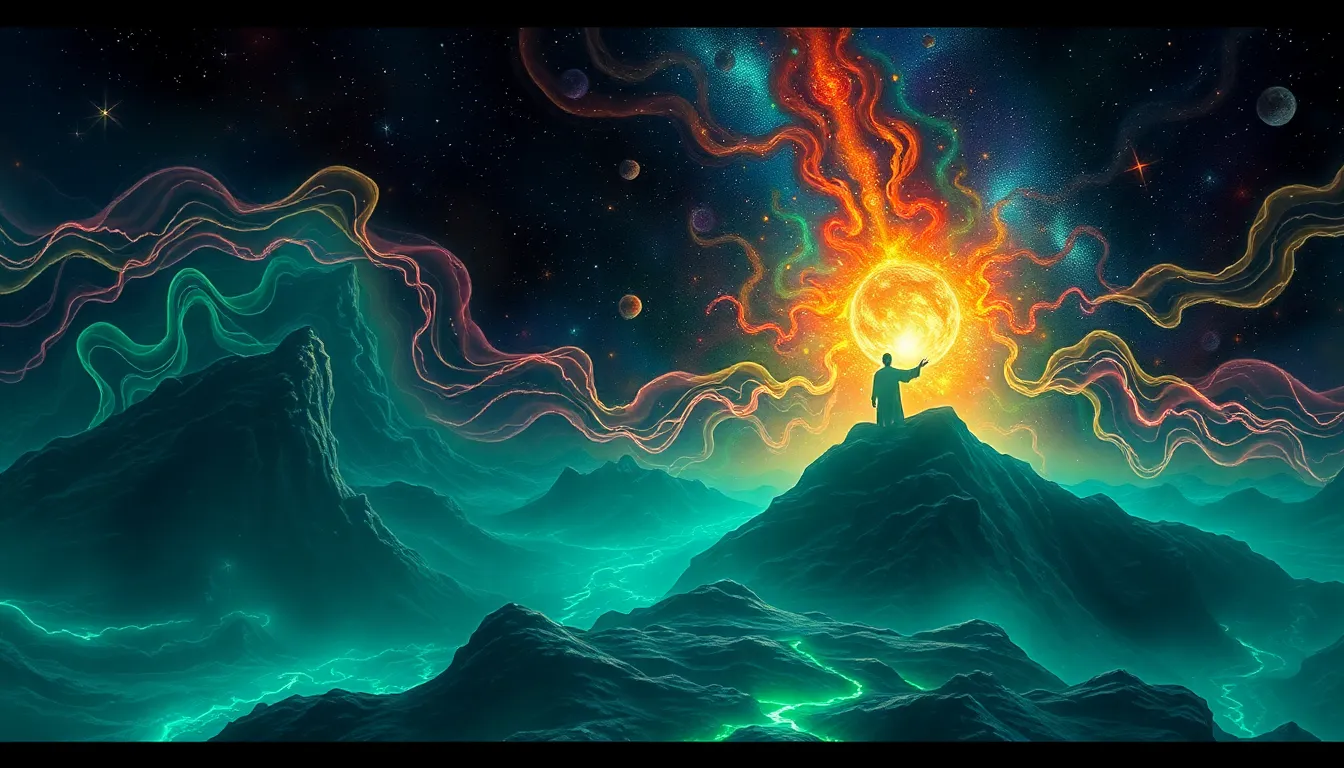The Most Captivating Myths of Ancient Deities and Their Powers
I. Introduction
Ancient deities are the divine figures worshipped in the various religions and mythologies of ancient civilizations. These gods and goddesses often embodied natural forces, human qualities, and universal truths, serving as focal points for worship, storytelling, and cultural identity.
Myths hold significant value in ancient cultures, acting as vehicles for understanding the world, human existence, and the supernatural. They are narratives that convey moral lessons, cultural heritage, and the complexities of life through the actions and attributes of these deities.
The purpose of this article is to explore some of the most captivating myths surrounding ancient deities and the powers attributed to them, revealing how these stories continue to resonate through time.
II. The Role of Mythology in Ancient Societies
Mythology served as a cultural cornerstone in ancient societies, providing a framework through which people understood their world. These narratives were not merely stories; they were a means to convey values, traditions, and beliefs.
- Religion: Myths often formed the foundation of religious practices, influencing rituals and ceremonies.
- Art: They inspired artistic expression, reflected in sculptures, paintings, and literature.
- Daily Life: Myths shaped social norms and ethics, guiding individuals in their daily interactions.
Additionally, myths played a crucial role in explaining natural phenomena and human existence. They offered explanations for the seasons, weather patterns, and life cycles, bridging the gap between the known and the unknown.
III. An Overview of Prominent Ancient Civilizations and Their Deities
Across various ancient civilizations, distinct pantheons of gods and goddesses emerged, each with unique characteristics and powers:
- Ancient Egyptian Pantheon: Featured deities like Osiris, Isis, and Ra, each representing different aspects of life and death.
- Greek and Roman Gods and Goddesses: Included Zeus, Athena, and Apollo, who embodied various human traits and natural forces.
- Norse Mythology: Comprised figures like Odin, Thor, and Loki, reflecting the rugged spirit of the Viking age.
- Hindu Deities: Encompassed a vast array of gods, including Brahma, Vishnu, and Shiva, each with multifaceted roles in the universe.
IV. The Enigmatic Powers of Egyptian Deities
The ancient Egyptians worshipped a rich pantheon of gods, each possessing unique powers that influenced various aspects of life and the afterlife.
- Osiris: God of the Afterlife and Resurrection; he was believed to preside over the dead and offer eternal life through his resurrection.
- Isis: The Protector and Healer; revered for her magical abilities and as a nurturing figure, she was instrumental in the resurrection of Osiris.
- Ra: The Sun God and Creator of Life; Ra was central to Egyptian cosmology, symbolizing life, light, and growth.
- Anubis: Guardian of the Underworld; he was responsible for mummification and guiding souls to the afterlife.
V. The Intriguing Myths of Greek and Roman Gods
Greek and Roman mythology is filled with tales of gods and heroes that illustrate human strengths and weaknesses.
- Zeus: King of the Gods, known for his control over weather, particularly lightning and storms, symbolizing power and authority.
- Athena: Goddess of Wisdom and Warfare; she represented strategic warfare and was often depicted with an owl, symbolizing knowledge.
- Poseidon: God of the Sea and Earthquakes; he wielded a trident and was known for his temperamental nature, affecting sailors’ fates.
- The Tale of Hercules: His Twelve Labors were a series of challenges that demonstrated strength, bravery, and the quest for redemption.
VI. Norse Deities and Their Mythical Powers
Norse mythology is steeped in tales of gods who embody various aspects of existence and human nature.
- Odin: The All-Father, known for his wisdom and knowledge of runes, often sacrificing for greater insight.
- Thor: God of Thunder, protector of humanity, wielding Mjölnir, a hammer that ensured safety from giants.
- Freyja: Goddess of Love, War, and Fertility; she was celebrated for her beauty and battle prowess.
- Loki: The Trickster, known for his cunning and chaotic influence, often causing problems for the gods but also aiding them.
VII. The Rich Tapestry of Hindu Deities
The Hindu pantheon is diverse, with deities representing various aspects of the cosmos and human experience.
- Brahma: The Creator, responsible for the creation of the universe and all living beings.
- Vishnu: The Preserver, who maintains cosmic order and has ten avatars, including Rama and Krishna.
- Shiva: The Destroyer, embodying transformative powers through destruction and regeneration.
- Devi: The Divine Feminine, representing multiple forms and aspects of female power, including Kali and Durga.
VIII. The Common Themes and Archetypes Among Ancient Myths
Across different cultures, similar themes and archetypes emerge, illustrating universal human experiences:
- Creation Myths: Stories that explain the origins of the universe and humanity, often involving a primordial being or cosmic event.
- Heroic Quests: Narratives of heroes embarking on journeys to achieve great deeds, facing challenges that test their character.
- Life, Death, and Rebirth: Myths that explore the cycles of life, illustrating the inevitability of death and the hope for rebirth.
These commonalities highlight the shared human experience across cultures, revealing how ancient societies sought to make sense of their world through the lens of mythology.



